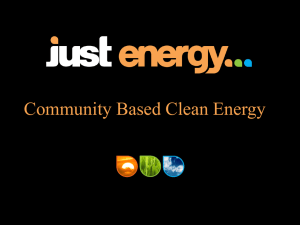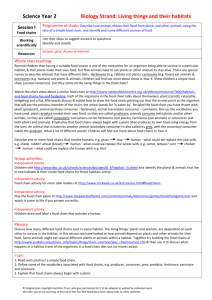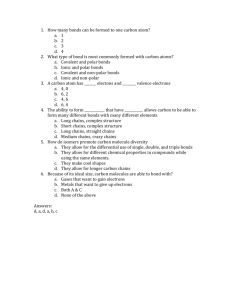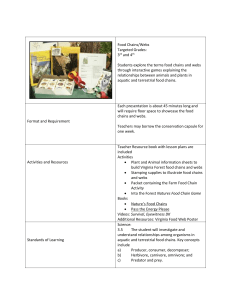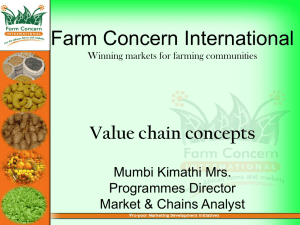Gender Inclusion in Value Chains
advertisement
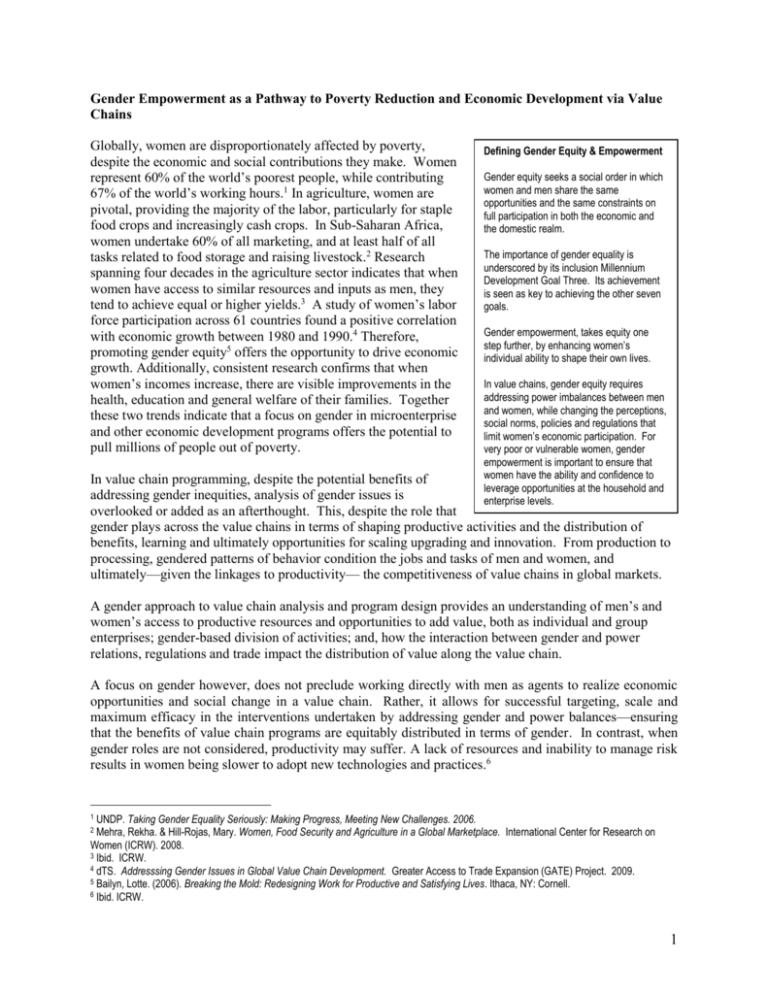
Gender Empowerment as a Pathway to Poverty Reduction and Economic Development via Value Chains Globally, women are disproportionately affected by poverty, despite the economic and social contributions they make. Women represent 60% of the world’s poorest people, while contributing 67% of the world’s working hours.1 In agriculture, women are pivotal, providing the majority of the labor, particularly for staple food crops and increasingly cash crops. In Sub-Saharan Africa, women undertake 60% of all marketing, and at least half of all tasks related to food storage and raising livestock.2 Research spanning four decades in the agriculture sector indicates that when women have access to similar resources and inputs as men, they tend to achieve equal or higher yields.3 A study of women’s labor force participation across 61 countries found a positive correlation with economic growth between 1980 and 1990.4 Therefore, promoting gender equity5 offers the opportunity to drive economic growth. Additionally, consistent research confirms that when women’s incomes increase, there are visible improvements in the health, education and general welfare of their families. Together these two trends indicate that a focus on gender in microenterprise and other economic development programs offers the potential to pull millions of people out of poverty. Defining Gender Equity & Empowerment Gender equity seeks a social order in which women and men share the same opportunities and the same constraints on full participation in both the economic and the domestic realm. The importance of gender equality is underscored by its inclusion Millennium Development Goal Three. Its achievement is seen as key to achieving the other seven goals. Gender empowerment, takes equity one step further, by enhancing women’s individual ability to shape their own lives. In value chains, gender equity requires addressing power imbalances between men and women, while changing the perceptions, social norms, policies and regulations that limit women’s economic participation. For very poor or vulnerable women, gender empowerment is important to ensure that women have the ability and confidence to leverage opportunities at the household and enterprise levels. In value chain programming, despite the potential benefits of addressing gender inequities, analysis of gender issues is overlooked or added as an afterthought. This, despite the role that gender plays across the value chains in terms of shaping productive activities and the distribution of benefits, learning and ultimately opportunities for scaling upgrading and innovation. From production to processing, gendered patterns of behavior condition the jobs and tasks of men and women, and ultimately—given the linkages to productivity— the competitiveness of value chains in global markets. A gender approach to value chain analysis and program design provides an understanding of men’s and women’s access to productive resources and opportunities to add value, both as individual and group enterprises; gender-based division of activities; and, how the interaction between gender and power relations, regulations and trade impact the distribution of value along the value chain. A focus on gender however, does not preclude working directly with men as agents to realize economic opportunities and social change in a value chain. Rather, it allows for successful targeting, scale and maximum efficacy in the interventions undertaken by addressing gender and power balances—ensuring that the benefits of value chain programs are equitably distributed in terms of gender. In contrast, when gender roles are not considered, productivity may suffer. A lack of resources and inability to manage risk results in women being slower to adopt new technologies and practices.6 UNDP. Taking Gender Equality Seriously: Making Progress, Meeting New Challenges. 2006. Mehra, Rekha. & Hill-Rojas, Mary. Women, Food Security and Agriculture in a Global Marketplace. International Center for Research on Women (ICRW). 2008. 3 Ibid. ICRW. 4 dTS. Addresssing Gender Issues in Global Value Chain Development. Greater Access to Trade Expansion (GATE) Project. 2009. 5 Bailyn, Lotte. (2006). Breaking the Mold: Redesigning Work for Productive and Satisfying Lives. Ithaca, NY: Cornell. 6 Ibid. ICRW. 1 2 1 To date many initiatives seeking to target women and combat poverty have limited their focus to value chains in which women already play a predominant role. In some environments, this may be the optimum response in the short-term, if there are cultural limits on women’s mobility or risks in terms of women’s personal safety. However, in the long term to ensure that women are not economically marginalized, it is important to understand the gender dimension across a wide variety of high potential value chains, including chains that are currently male-dominated. This allows for the identification of incentives that will promote both women’s participation and accrual of benefits to them—providing a pathway to transition women from the informal, low value chains in which they tend to be concentrated into higher value opportunities. The application of a gender lens to value chain development, and more broadly economic development is not new. Yet, there is still much to learn in terms of the most effective approaches to address gender issues and how these can be scaled, particularly in value chains development. Gender equity has been mainstreamed across the work of USAID, the World Bank and others. However, these agencies in defining gender as a cross cutting issue, often defecto overlook it, or address inequities at a very cursory level. In most programs gender is addressed via arbitrary requirements such as percentages of women in business assocations and their leadership. This overlooks the underlying causes of gender inequity and often as a result does not address the structural and cultural causes in a economy. Similarly, those organizations that have prioritized gender, sometimes need to bring a more rigorous economic lens to their work, particularly in reconciling the rights-based approaches they often employ with the reality of economic incentives which the value chain approaches leverages to reach scale.7 Additionally, more documentation is needed of what is working, both to enable a more robust learning agenda around interventions to promote gender equity in economic development and to produce more evidence as to how it impacts economic objectives. Application of Gender Empowerment to Value Chain Development There are several different frameworks for evaluating gender equity and empowerment, including: Mayoux and Mackie; XXX and CARE. At their core, all these frameworks essentially evaluate three factors: agency (the capacity of women as individuals to take action); relations (building relationships, coalitions and mutual support to expand agency and alter structures); and structure (societal norms and institutions that codify and reinforce gender relations at every level of society). To achieve empowerment, individual women build relationships, joint efforts, and mutual support in order to expand their capacity, while realizing equity and ultimately in the case of value chains, livelihood security across relations and structure. Figure 1 provides an example of the framework in use on a critical issue related to women’s participation in agricultural value chains around the world: namely land rights.8 In many countries, although women undertake the majority of farm labor, they often do not reap the benefits, since the land and therefore the production is controlled by their husbands or other male members of the community. CARE for example has documented examples of when land once used for subsistence farming is converted to cash crops the women who previously farmed the land are pushed off. An engendered value chain analysis, would review land use regulations, community and household practices to determine power and decision making around land use, so as to understand what interventions are needed to enable women to continue accessing the land, and optimally gain from opportunities to cultivate cash crops. Figure 1 identifies the opportunities to ensure women’s continued and expanded land access. Laven, Anna et al. Gender in Value Chains: Emerging Lessons and Questions. Agri-Pro Focus Research. April, 2009. Available online at: http://www.agriprofocus.nl 8 Hill, Catherine and Khan, Maliha. A Place to Grow: Bringing Women to the Center of CARE’s Agricultural Programs. Conceptual Underpinnings and Assessment Framework. April, 2008. 7 2 Agency •Knowledge of land/property laws. •Access to information. •Self confidence to claim rights. Achieving gender equitable land and property rights Relations •Women’s freedom of mobility to meet with others. •Acceptance by men for women meeting others outside the home. •Freedom to form coalitions and jointly claim rights. •Access to and knowledge of legal support services. Structure •Existence of gender equitable land/property (by)laws. •Existence of gender equitable social/cultural norms and beliefs. • Existence of legal support structures for female claimants. Other considerations in relation to each level of the framework, when bringing it to value chain analysis are as follows: Agency: At the most elemental level, women’s participation is often limited by the restrictions their families place upon their participation. This is particularly true for vulnerable women, due to poverty, restrictions on their rights, etc, which often limits human capital (e.g. education, productive work) and access to productive assets. As a result, if and when women are economically active, their husbands maintain control of the benefits which accrue. Therefore within agency, it is important to understand such conditions as: the gendered distribution of labor; and gender differential access to, and control over productive resources and uses of income. This is often at the household and/or microenterprise level. Relations: This is where much of the tradition analysis of a value chain is undertaken, in terms of understanding the constraints and opportunities to increase the productivity and competitiveness of the chain. An engendered analysis drills down more on the issues of that influence women’s participation in and access to the productive opportunities within individual small and medium enterprises and in both horizontal and vertical linkages between enterprises. Some of the key issues that may be included at this level of the analysis are: Governance along the value chain: Enables an understanding of the social norms and power balances that include relationships between firms and between enterprises and labor. A governance analysis would brings a gender equity lens to issues such as contracting, outsourcing standards and workplace issues. Gender Division of Labor along the Value Chain: Often within value chains, women’s participation may diminish as the chain progresses into higher value activities. A analysis of gender roles and responsibilities at the different steps in value addition and trade, identifies issues that may influence this access, including ownership of capital goods, sources of information, working conditions and processes for decision-making. Management of Key Decisions and Processes for Adding Value: Leadership roles in value chains are sometimes overemphasized—resulting in superficial interventions that seek to place women in decision 3 making positions, resulting in titular leadership. A more nuanced understanding of women’s role in leadership is needed, as well as the key levers of influence in decision making processes. Supporting Services: Given the importance of services and inputs to upgrading and management of risk in value chains, it is important to understand how gender influences assess to such key services as public and private extension, marketing, financial services, and technology. Additionally, in terms of public services, such as extension and sometimes technology development, it is critical to understand whether the key institutions consider and have the capacity to address gender equity. Structure: Often change in a value chain is dependent on the structural environment, in terms of policies and regulatory frameworks that affect the value chain, as well cultural norms. Issues such as rule of law, policies that are consider gender, social roles for women should be part of a comprehensive value chain analysis. In addressing structure, donors need to make longer term commitments, given the institutional structures that need to be addressed—and typical program timeframes of two to three years are often not sufficient. Organizational Aspects of Gender Equity Programming Key to success in engendered value chain programs is the operational aspect. To realize systemic change in gender equity, requires organizations who observe these same practices in their operations and human resources. In order to effect positive gender equity change along the chain, organizations should demonstrate a high level of commitment to the issue, as well as providing support to staff and partner organizations to build their capacity to address it. 4
